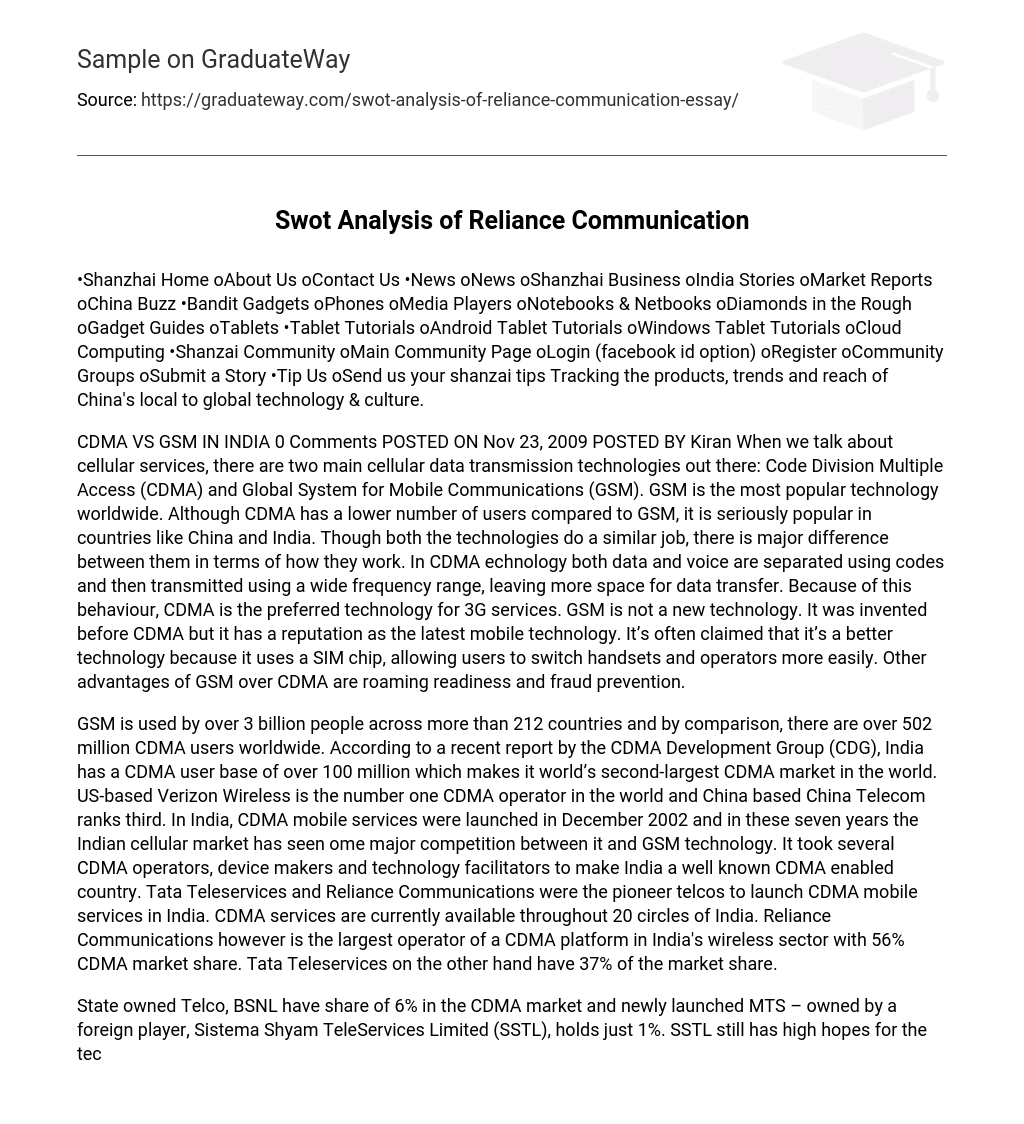There are two main technologies for data transmission in cellular services: Code Division Multiple Access (CDMA) and Global System for Mobile Communications (GSM). GSM is the dominant global technology, while CDMA remains popular in countries such as China and India.
While serving a similar purpose, CDMA and GSM technologies operate differently. CDMA utilizes codes to separate data and voice, transmitting them across a wide frequency range to optimize data transfer capacity. This makes it the preferred choice for 3G services. On the other hand, despite predating CDMA, GSM is considered the most recent mobile technology. Its superiority lies in its utilization of SIM chips which enable users to switch handsets and operators more conveniently. Additionally, GSM offers advantages such as roaming readiness and fraud prevention that are not available with CDMA.
More than 3 billion individuals in over 212 countries use GSM, while there are approximately 502 million CDMA users worldwide. In India, the CDMA user base exceeds 100 million, making it the second-largest CDMA market. According to the CDMA Development Group (CDG), Verizon Wireless from the US is the leading global CDMA operator, with China Telecom ranking third.
In December 2002, CDMA mobile services were introduced in India resulting in fierce competition with GSM technology. Over the course of seven years, numerous CDMA operators, device manufacturers, and technology facilitators played a significant role in establishing India as a prominent CDMA-enabled nation.
Tata Teleservices and Reliance Communications were the pioneers in introducing CDMA mobile services in India. Presently, CDMA services are accessible across all 20 circles of the country. However, Reliance Communications dominates the CDMA market with a significant majority share of 56%, making it India’s largest operator in the wireless sector. Conversely, Tata Teleservices possesses a market share of 37%.
BSNL, a government-owned telecommunications company, holds a 6% share in the CDMA market while MTS, owned by Sistema Shyam TeleServices Limited (SSTL), a foreign player, only has a 1% share. Despite this difference in market shares, SSTL remains optimistic about the potential of the technology to gain more market share. Mr. Vsevolod Rozanov, President and CEO of SSTL, explains that MTS India is aggressively launching CDMA2000 services in various telecom circles across the country. He also highlights that CDG serves as an international consortium of CDMA service providers and manufacturers which provides MTS India with a suitable platform to connect with the global CDMA community.
SSTL will encounter difficulties in acquiring fresh customers in the mobile phone industry of India because it faces competition from established frontrunners such as Tata Teleservices and Reliance Telecommunications. The GSM sector holds dominance, boasting an excess of 350 million GSM subscribers and over 10 GSM service providers. Bharti Airtel takes the lead with approximately 95 million users. Other notable GSM providers encompass Vodafone, Reliance, Tata, Spice, BSNL, IDEA, Aircel, and MTNL. It is worth mentioning that both Reliance and Tata also operate in the CDMA business.
Reliance GSM and TATA DoCoMo are two new entrants in the Indian GSM market. The emergence of these services by both companies has led to the question of how the shanzhai industry has influenced the growth of CDMA and GSM markets in India. A major contribution from this industry is the availability of affordable handsets for Indian users. If you visit any mobile market in an Indian city, you will be amazed at the wide variety of cloned and shanzhai phones that cater to both GSM and CDMA technologies. However, there was concern a few months ago when the Indian telecom ministry instructed telecom operators to ban phones with invalid IMEI numbers, which could potentially eliminate shanzhai phones from India altogether.
Thankfully, owners of shanzhai phones now have the option to obtain valid IMEI numbers and continue using their phones. This is significant because one of the main reasons GSM dominates the Indian telecom market over CDMA is that people in India often change or upgrade their handsets, which CDMA restricts to some extent. However, the tides may be turning as the CDMA Development Group (CDG) has recently launched OMH (Open Market Handsets), aiming to expand device options and provide new distribution channels within the CDMA environment.





